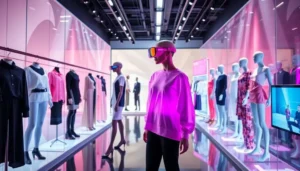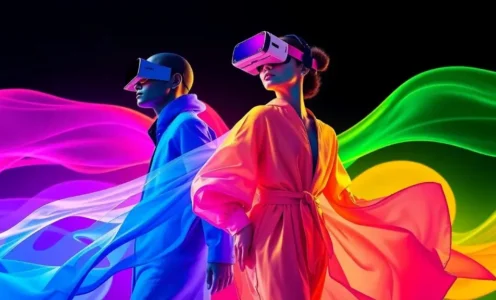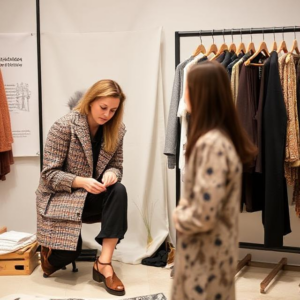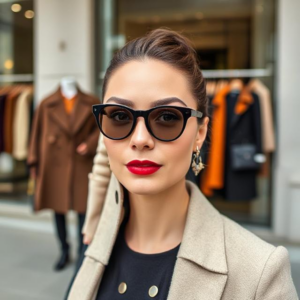Top 9 Technology Trends Reshaping Fashion Industry (2025)
The fashion sector is undergoing an extraordinary technology shift. As someone observing these changes for some time, I have never seen innovation develop so quickly. The new technology and fashion convergence is not only changing how clothes are designed and sold but also revolutionizing the entire industry ecosystem from concept to closet.
- Consumers today are leading this transformation with demands for:
- Personalization that reflects their tastes
- Sustainable options that reflect their values
- An effortless transition between online and brick-and-mortar shopping experiences
Fashion brands feel increasing pressure to operate more efficiently and to lower the immense waste historically experienced in the industry. IntelliSupport says they have seen a huge uptick in fashion brands requiring IT support for their increasingly complex workflows.
1. AI-Powered Design Tools
Remember the days when fashion design was a strictly human endeavor? Those days are numbered. I just witnessed a demo of generative AI that produced dozens of pattern variations in minutes. This would have taken a group of designers days.
- Major brands are now developing capabilities to:
- Predict trends with laser-like accuracy
- Analyze billions of social media posts and online searches
- Predict the next big trend before it happens
The sustainability impact is just as impressive. With virtual sampling, waste from physical prototyping has been reduced by over 70%. A friend who is a designer just told me their studio has cut two-thirds of their fabric waste after using the AI tools for just one year—good for their business and good for the earth.
2. 3D Virtual Prototyping
Digital product creation is revolutionizing the sampling process. Brands are creating photorealistic 3D models of garments before cutting a single piece of fabric, slashing sampling costs by approximately 30%.
What’s particularly exciting is how this technology enables truly global collaboration. I recently spoke with a designer in New York who was simultaneously refining a collection with team members in Milan, Seoul, and Mumbai—all working on the same digital assets in real-time.
3. Augmented Reality Fittings
Virtual try-on technology has moved from novelty to necessity, with adoption growing at 34% annually. I tried one of these systems last month

and was genuinely surprised by how accurately it showed how different fabrics would drape on my body.
The technology has also spawned entirely new product categories, with NFT-integrated digital garments becoming status symbols on social media platforms. Some digital-only fashion pieces are now selling for prices comparable to their physical counterparts!
4. Blockchain Supply Chain Tracking
Transparency is no longer optional in fashion. Blockchain technology is providing unprecedented visibility into supply chains, allowing brands to verify ethical sourcing claims with immutable data.
This same technology is proving invaluable in fighting counterfeits. I recently purchased a luxury handbag that came with a blockchain-verified digital certificate of authenticity, giving me confidence my investment was genuine while potentially maintaining its resale value.
5. Personalized AI Shopping
Shopping experiences have become remarkably personalized thanks to AI assistants that understand your style preferences better than your friends do. These algorithmic stylists have increased conversion rates by 28% for early adopters.
Meanwhile, body-scanning technology has revolutionized sizing. After a 30-second scan at a local retailer last month, I now have perfectly fitted clothing delivered to my door without ever trying items on—the days of ordering multiple sizes might soon be behind us.
6. Smart Textiles Development
The fabrics themselves are becoming intelligent:
- Phase-change materials that adapt to your body temperature are now mainstream in athletic wear
- Self-cleaning fabrics that require significantly less washing are reducing household water consumption
I’ve been testing a shirt that naturally repels stains and odors for two weeks now—it’s remarkably fresh despite multiple wears, using specialized fibers that break down organic matter when exposed to sunlight.
7. DTC Digital Commerce Evolution
Social commerce now drives nearly a third of all fashion sales. The line between scrolling and shopping has virtually disappeared as platforms integrate seamless checkout experiences.
Behind the scenes, micro-factories located near urban centers are enabling ultra-fast fulfillment, with some brands promising delivery within hours of purchase in major cities. This shift has democratized fashion entrepreneurship—I’ve watched several designer friends launch successful labels with minimal capital by leveraging these digital-first approaches.
8. Circular Fashion Tech
The secondhand market is booming, with AI-powered resale platforms growing at an astonishing 400%. These platforms use artificial intelligence to automatically authenticate, price, and list items, removing friction from the reselling process.
Meanwhile, breakthrough chemical recycling technologies are finally addressing the challenge of blended fabrics, allowing materials previously destined for landfills to reenter the supply chain as virgin-quality inputs.
9. AR/VR Retail Experiences
Virtual showrooms are greatly minimizing the amount of large physical retail space needed and cutting costs up to 50%. These immersive experiences rival whatever a traditional store is capable of offering—changing the season, the location, even gravity in an instant!
The gaming realm has emerged as an unlikely frontier for fashion, as major luxury brands are continuing to create digital assets for premier platforms while exposing themselves to a radically new audience.
Implementation Challenges
Despite these exciting advances, significant hurdles remain:
- Many small and medium enterprises struggle with the initial investment costs of these technologies
- Consumer privacy concerns around body scanning and personal data collection require thoughtful navigation
- As sustainability becomes a key selling point, the risk of greenwashing through unverified technological claims threatens to undermine genuine progress
The Future
Looking ahead to the year 2030, there will likely be even more transformative developments. The convergence of quantum computing and smart materials will produce entirely new classes of adaptive clothing, while regulations will continue to evolve to manage the continuing negotiation of the opportunities and risks this technology contains, potentially creating competitive advantages for those who stand with compliant solutions.
For fashion executives seeking to navigate these exciting and severe transformations, technology investments are now as vital to the business strategy as the creative direction is. For brands to be successful over the next several years, they must frame technology as an enabler of creativity, not a replacement for it.
The human dimensions of fashion remain irreplaceable in self-expression, craftsmanship, and cultural meaning. At the same time, these human dimensions of fashion will be enhanced and remixed through technology in ways we are just beginning to comprehend.
…


 As the demand for eco-conscious products and sustainability continues to rise, the role of a
As the demand for eco-conscious products and sustainability continues to rise, the role of a 
 In-depth Knowledge of Sustainability
In-depth Knowledge of Sustainability